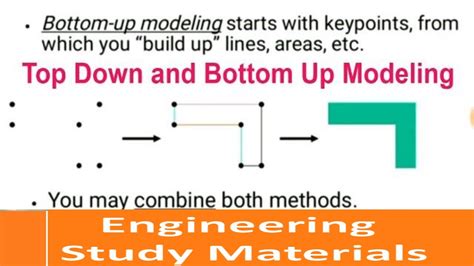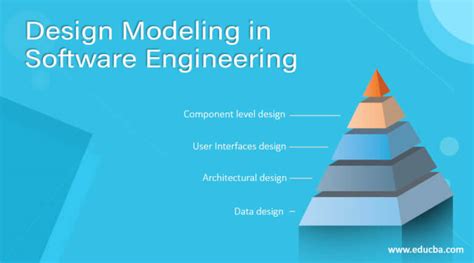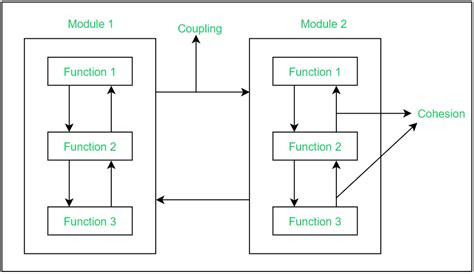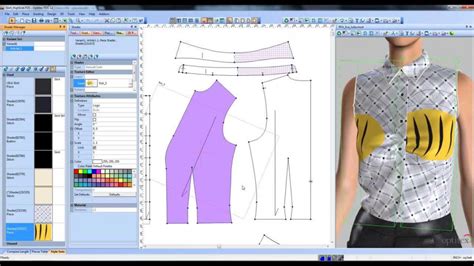In the ever-evolving world of software engineering, the need for efficient and reliable software systems has become paramount. One approach that has proven to be effective in achieving this goal is structured design. In this blog post, we will explore the concept of structured design in software engineering, its benefits, and how it plays a crucial role in developing robust software solutions.
I. Understanding Structured Design:
Structured design is a methodical approach to software development that emphasizes breaking down complex systems into smaller, manageable modules. This approach enables developers to better comprehend the system’s functionality and facilitates efficient collaboration among team members. By adhering to a set of well-defined rules and principles, structured design aims to create software that is easy to understand, modify, and maintain throughout its lifecycle.
II. Importance of Structured Design:
A. Modularity and Encapsulation:
One of the key benefits of structured design is its focus on modularity and encapsulation. Breaking down a system into smaller modules allows for better organization, as each module handles a specific task or functionality. This modular approach not only simplifies the development process but also enhances code reusability, making future modifications and updates more manageable.
B. Clear Hierarchy and Abstraction:
Structured design emphasizes the creation of a clear hierarchy of modules, with each module serving a distinct purpose. This promotes abstraction, as higher-level modules interact with lower-level modules through well-defined interfaces. This separation of concerns enhances code readability, reduces complexity, and enables parallel development, ultimately leading to more efficient software development.
C. Ease of Testing and Debugging:
With structured design, each module can be independently tested and debugged, as they are designed to be self-contained. This modular approach allows for easier identification and isolation of issues, simplifying the debugging process. Additionally, the clear hierarchy and well-defined interfaces make it easier to test each module in isolation, reducing the scope of testing and improving the overall quality of the software.
III. Structured Design Techniques:
A. Top-Down Design:
Top-down design is a widely used technique in structured design, where the system is initially viewed as a high-level abstraction, and then gradually decomposed into smaller modules. This approach enables developers to start with a broad understanding of the system’s requirements and functionality, and then gradually refine the design at a more detailed level. Top-down design facilitates a systematic and organized development process, ensuring that all requirements are met while maintaining a clear structure.
B. Data Flow Diagrams:
Data flow diagrams (DFDs) are powerful tools used in structured design to represent the flow of data within a system. DFDs help visualize the input, processing, and output of data, allowing developers to identify potential bottlenecks and optimize the system’s performance. By modeling the system’s data flow, developers can design and organize modules that efficiently handle data processing, leading to more effective software solutions.
C. Structured English:
Structured English is a technique that uses a subset of English language constructs to describe the logic and flow of a program. This technique aids in the comprehension of the system’s functionality by providing a clear and concise description of the steps involved in achieving a specific task. By using structured English, developers can communicate and document the design and implementation of the software system effectively.
IV. Challenges and Best Practices:
A. Balancing Granularity:
Determining the appropriate granularity level for modules can be a challenge in structured design. Modules should be neither too fine-grained nor too coarse-grained. Striking the right balance ensures that modules are cohesive, have a clear responsibility, and can be easily understood and maintained.
B. Adequate Documentation:
Structured design relies heavily on documentation to ensure clear communication and understanding among team members. Proper documentation of module interfaces, data structures, and algorithms is vital to facilitate collaboration and enable future maintenance and enhancements.
C. Continuous Refinement:
Structured design is an iterative process, and as such, it requires continuous refinement as new requirements emerge or changes are made to the system. Regularly reviewing and refining the design ensures that the software remains adaptable and robust, even as it evolves over time.
Conclusion:
Structured design is a powerful approach in software engineering that enables developers to create efficient, reliable, and maintainable software solutions. By breaking down complex systems into modular components, structured design promotes code reusability, enhances readability, and simplifies testing and debugging. Techniques such as top-down design, data flow diagrams, and structured English provide valuable tools to aid in the design process. While challenges may arise, adhering to best practices such as balancing granularity and maintaining adequate documentation can mitigate potential issues. By embracing structured design principles, software engineers can build software systems that are scalable, adaptable, and of high quality.
We hope this blog post has shed light on the importance and benefits of structured design in software engineering. Have you used structured design in your projects? What challenges did you face, and how did you overcome them? Share your thoughts and experiences in the comments below!
Remember, your insights and experiences contribute to a vibrant community of software engineers striving for excellence.
6. Structured Design – Software Engineering [Book]
Chapter 6 Structured Design Structured Design is a systematic methodology to determine design specification of software. The basic principles, tools and … – www.oreilly.com
Top Down And Bottom Up Design In Software Engineering
Top Down And Bottom Up Design In Software Engineering In the world of software engineering design plays a crucial role in creating robust and efficient software systems. Two popular approaches to software design are top-down and bottom-up design. These approaches offer different perspectives and met – drawspaces.com

Procedural Design In Software Engineering
Procedural Design In Software Engineering In the world of software engineering design plays a crucial role in determining the success of a project. One popular design approach is procedural design which focuses on breaking down a system into smaller manageable procedures or functions. These procedur – drawspaces.com

`Structured Design’ by Yourdon and Constantine
Structured design is the process of deciding which components interconnected in which way will solve some well-specified problem. “Design” means to plan or … – www.win.tue.nl
Low Level Design In Software Engineering
Low Level Design In Software Engineering Introduction Software engineering is a complex field that requires careful planning and meticulous attention to detail. One crucial aspect of software development is low level design. Low level design involves the creation of detailed specifications for indiv – drawspaces.com

Effective Modular Design In Software Engineering
Effective Modular Design In Software Engineering In the world of software engineering modular design plays a crucial role in creating robust and maintainable systems. It involves breaking down a complex software system into smaller self-contained modules that can be developed tested and maintained i – drawspaces.com

Component Design In Software Engineering
Component Design In Software Engineering In the realm of software engineering component design plays a crucial role in the development of robust and scalable software systems. It involves breaking down a complex system into smaller reusable and independent components which can be individually develo – drawspaces.com

Modular Design In Software Engineering
Modular Design In Software Engineering Introduction In the fast-paced world of software engineering modular design has emerged as a key concept that allows developers to build complex systems while maintaining flexibility and scalability. With the increasing demand for efficient and maintainable sof – drawspaces.com

Software Design Strategies
Structured design is a conceptualization of problem into several well-organized elements of solution. It is basically concerned with the solution design. – www.tutorialspoint.com

BIM for Structural Engineering | Key Benefits | Autodesk
Autodesk software for structural engineering · Architecture Engineering & Construction collection. Powerful BIM and CAD tools for designers, engineers, and … – www.autodesk.com

Structured Design – an overview | ScienceDirect Topics
Structured design addresses the behavior portion of a software system separately from the data portion. Breaking down a program’s structure helps develop more … – www.sciencedirect.com
Overview – Structured and Detailed Design
CSC 205 Software Engineering I. 1. Overview – Design. Introduction to Design; Review of Architectural Design; Modules … – users.csc.calpoly.edu
Software Pattern Design
Software Pattern Design: Creating Efficient and Scalable Solutions In the ever-evolving world of software development finding efficient and scalable solutions is crucial. This is where software pattern design comes into play. Software pattern design refers to a set of proven solutions to common prog – drawspaces.com

Best Cad Software For Fashion Design
Best CAD Software For Fashion Design: Revolutionizing the Industry Fashion design has evolved significantly in recent years thanks to advancements in technology. One such innovation that has revolutionized the industry is Computer-Aided Design (CAD) software. CAD software enables fashion designers t – drawspaces.com

Design Process In Engineering
Engineering Process Design Engineering Design Process The engineering design process is a series of steps that engineers follow to come up with a solution to a problem. Many times the solution to a problem involves … /a /p !– /wp:paragraph — /div !– /wp:column — !– wp:column {width:20%} — di – drawspaces.com

Definition Of Design Engineering
Definition of Design Engineering: Innovating Solutions for a Dynamic World Design engineering is a multifaceted field that combines creativity technical expertise and problem-solving skills to create innovative solutions. From product design to infrastructure development design engineers play a cruc – drawspaces.com
